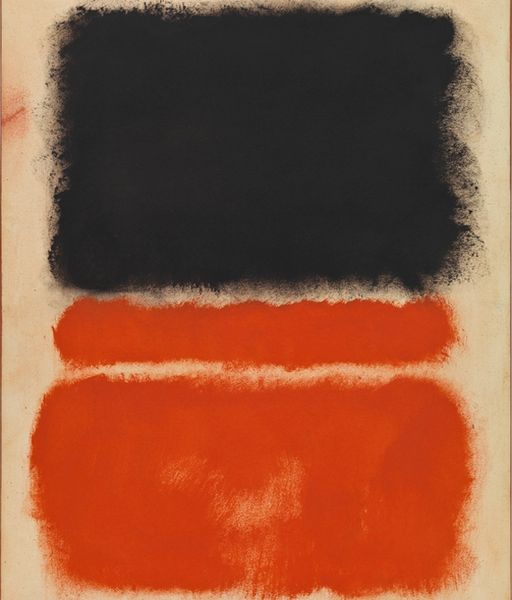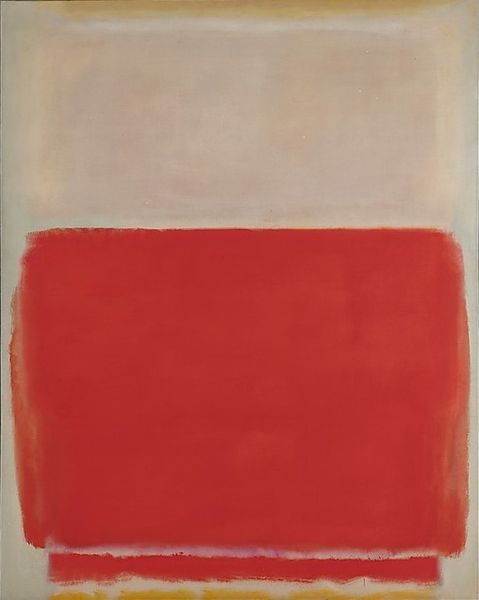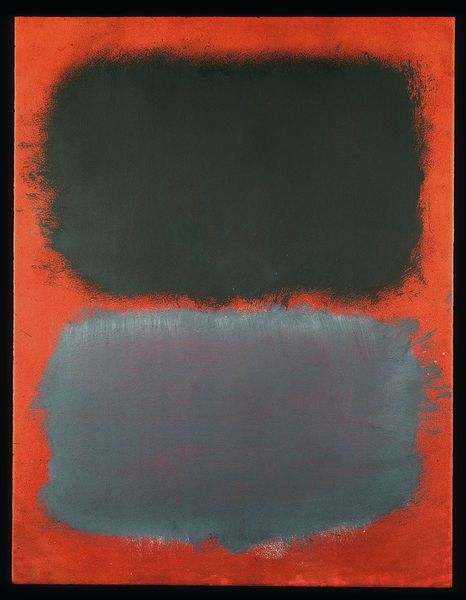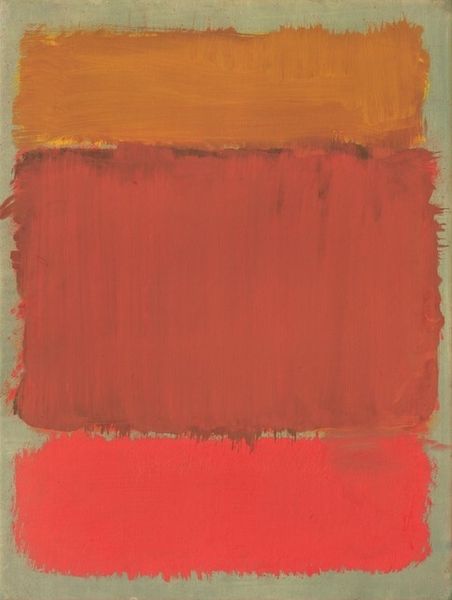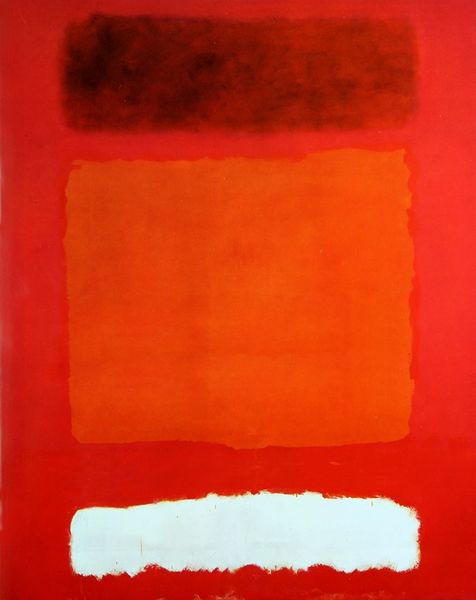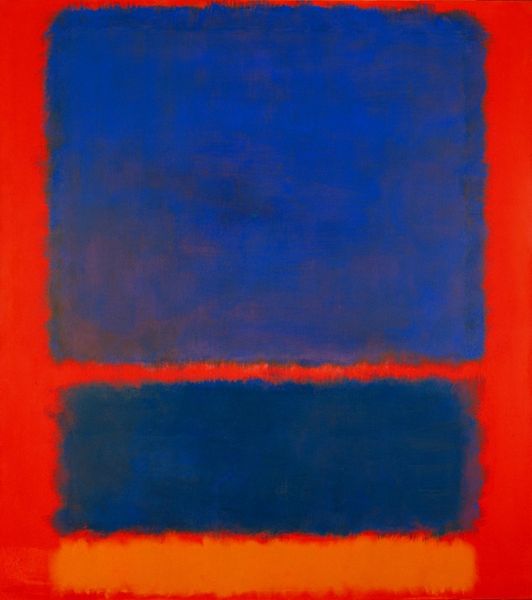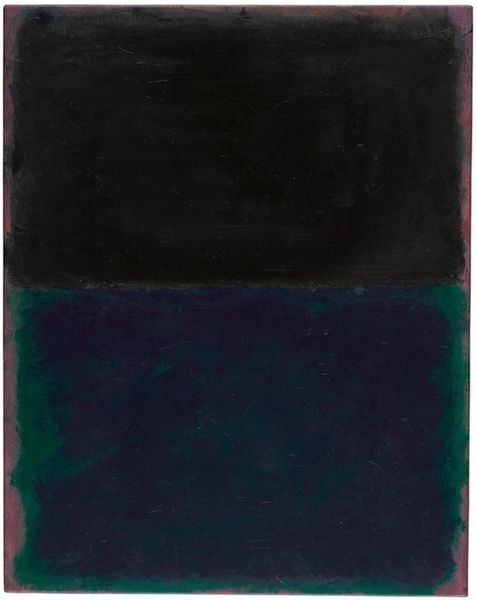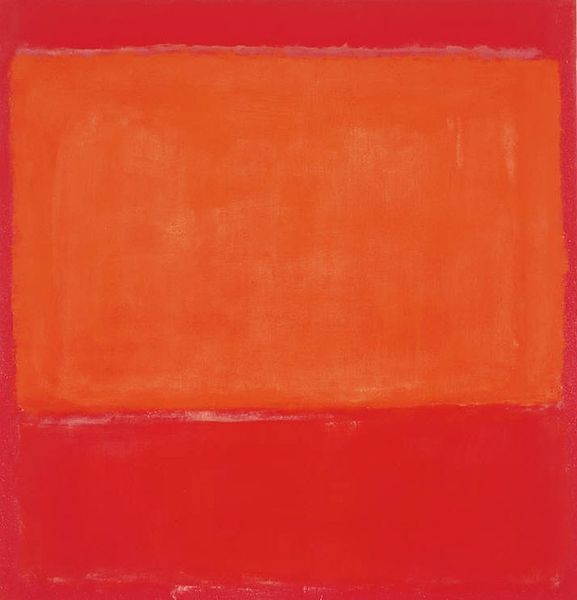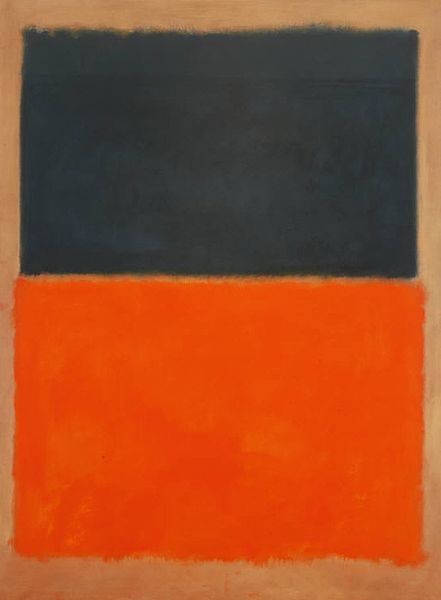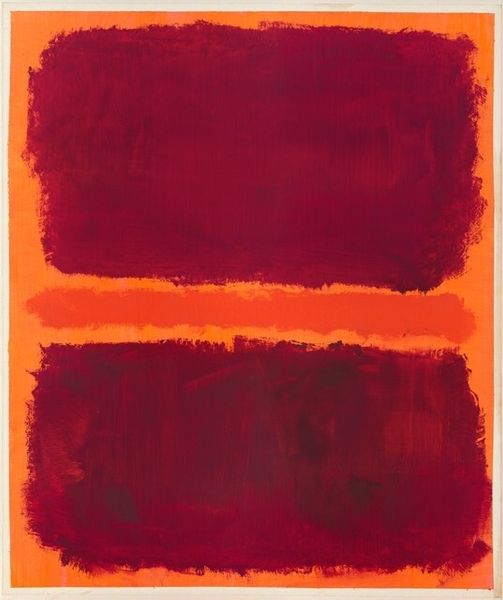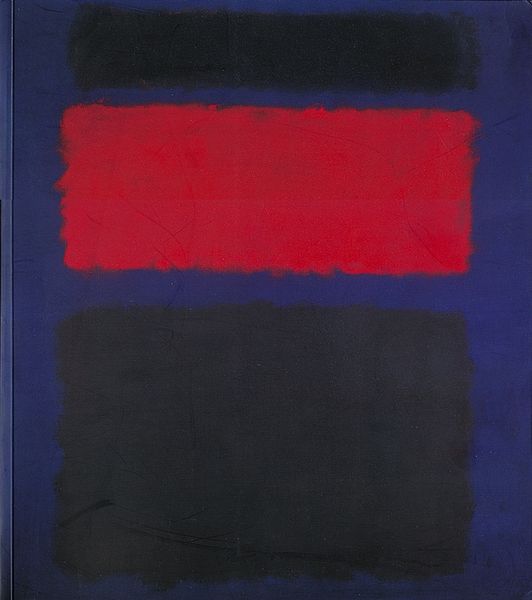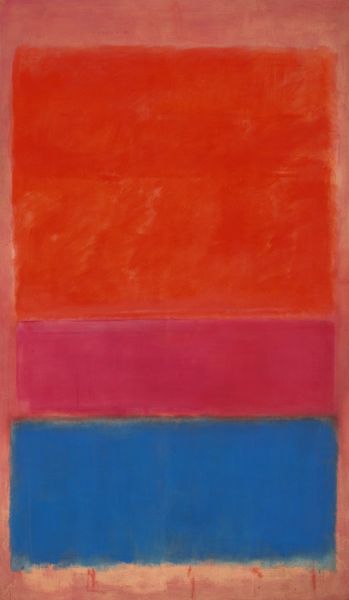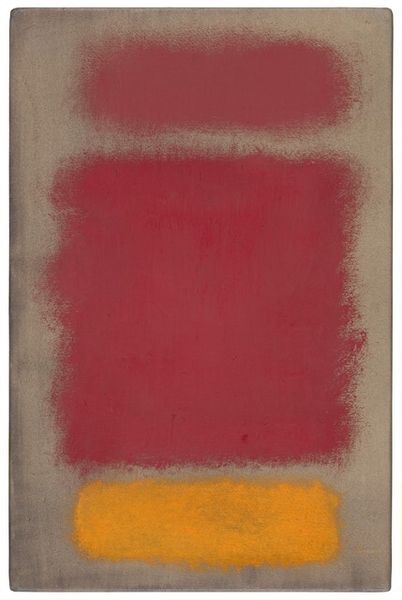
painting, oil-paint
#
abstract-expressionism
#
abstract expressionism
#
abstract painting
#
non-objective-art
#
painting
#
oil-paint
#
colour-field-painting
#
abstraction
#
abstract art
#
modernism
Dimensions: 193 x 233 cm
Copyright: Mark Rothko,Fair Use
Curator: Mark Rothko’s "No. 20" from 1957, now residing at the National Gallery of Australia, presents us with a fascinating exploration of color and form through oil paint on canvas. Editor: It’s immediately arresting, isn’t it? The somber, almost brooding rectangles floating in that sea of reddish hues... it evokes a deep sense of introspection for me. Curator: The application of thin layers, almost glazes, allows light to permeate the pigment, a characteristic technique of Color Field painting, the art movement where Rothko played a huge role. It is his use of material that draws me. How the build up changes its hue in a room. Editor: Absolutely. And the arrangement, the interplay between these dark, seemingly weighty rectangles and the fiery background…it’s loaded with symbolic weight. Do the colors represent an inner state, a cultural memory perhaps? The orange has the symbolic weight of courage. Curator: I understand that the symbolic implications can be interesting, but the real power, for me, lies in the materials. Look closely at the edges—the blurry, imprecise application challenges traditional painting and instead highlights materiality of paint and the gestures of application. Editor: Yes, but consider that those blurred edges are also emotionally charged boundaries. Are we not looking at Rothko contemplating the boundaries of the Self through the haze of existence? Each area as distinct, together they create an atmosphere of quiet contemplation that carries considerable emotion. Curator: Possibly, but you can get to the essence through materials and the process of the painting alone. Editor: So you don't think that this piece would be so popular, without the symbology embedded within? Curator: To answer your question directly, no, I don't believe symbology matters as much in this type of painting. Editor: I still think the appeal transcends the materiality and exists because it reflects back the audience in ways material alone does not. Curator: An interesting thought to consider, I will mull it over.
Comments
No comments
Be the first to comment and join the conversation on the ultimate creative platform.
